Radio Soil Sensor
This document will guide you through the Radio Soil Sensor project. You will be able to see, save and analyze moisture level and temperature in Node-RED and Grafana visualization tool.
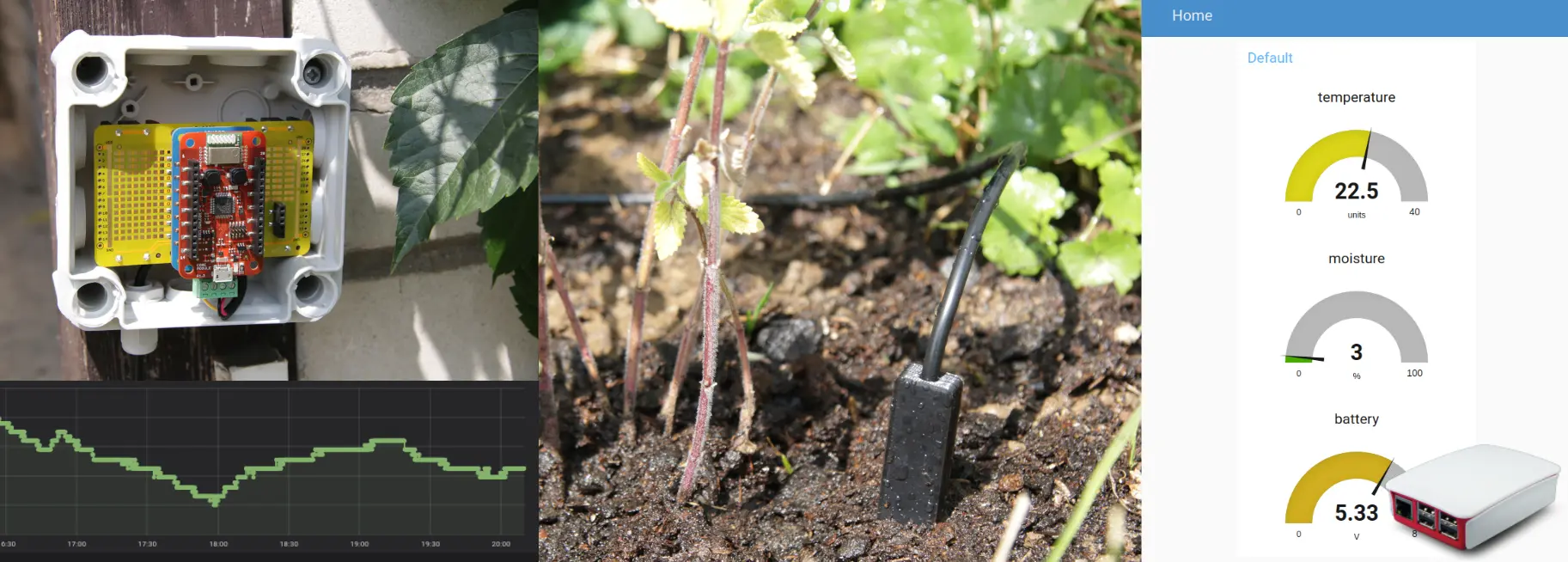
Video tutorial
Block Concept
Requirements
-
Either Soil Sensor Set, or individual components:
- 1x Soil Moisture Sensor
- 1x Sensor Module
- 1x Core Module
- 1x Battery Module
- 1x Radio Dongle
-
You will need Raspberry Pi with the HARDWARIO Raspbian distribution installed. Please see Raspberry Pi Installation document.
Measured data will be saved and visualized in Grafana on Raspberry Pi. It is also possible to use your computer. Just follow Quick Start Guide document.
Connecting to Raspberry Pi
All the configuration, services and flashing firmware will be done on the Raspberry Pi. You use your computer only to connect to the Raspberry Pi SSH server and Grafana web page.
Please follow the Raspberry Pi Login document where you find how to discover Raspberry Pi IP address on your network and connect to the SSH server.
Firmware Upload
In this procedure we will use the HARDWARIO Firmware Tool to upload firmware to the Core Module. You will connect and flash firmware with Raspberry Pi
Now it's time to write firmware to the Core Module.
Step 1: Connect the Micro USB cable to the Core Module and Raspberry Pi
Step 2: Upload the firmware to the Core Module:
You may want to update available firmwares by bcf update if the installation has been prolonged for a longer time after Playground Setup
Flashing Core Module R1 & R2 For differences of flashing older Core Module 1 and newer Core Module 2 please read Core Module R1 and R2 comparison in the Hardware section
Run the HARDWARIO Playground. In the Firmware tab choose and upload the bcf-radio-soil-sensor firmware to the Core Module:
Step 3: Remove the Micro USB cable from the Core Module and Raspberry Pi
At this point your firmware is successfully uploaded
Hardware Assembling
Step 1: Start with the Battery Module
Make sure the Battery Module does not have batteries inserted.
Step 2: Plug the Core Module on top of the Battery Module.
Step 3: Plug the Sensor Module on top of the Core Module.
Step 4: Plug the Soil Moisture Sensor connector to the Sensor Module.
Radio Pairing
In this section, we will create a radio link between the Radio Dongle and the Radio Climate Monitor.
Follow these steps in Node-RED:
Step 1: Click on the Start node pairing button
Make sure, that after pressing the Start node pairing button in the right debug tab you have two messages. One is command and the second one with "start" is the response from Radio Dongle.
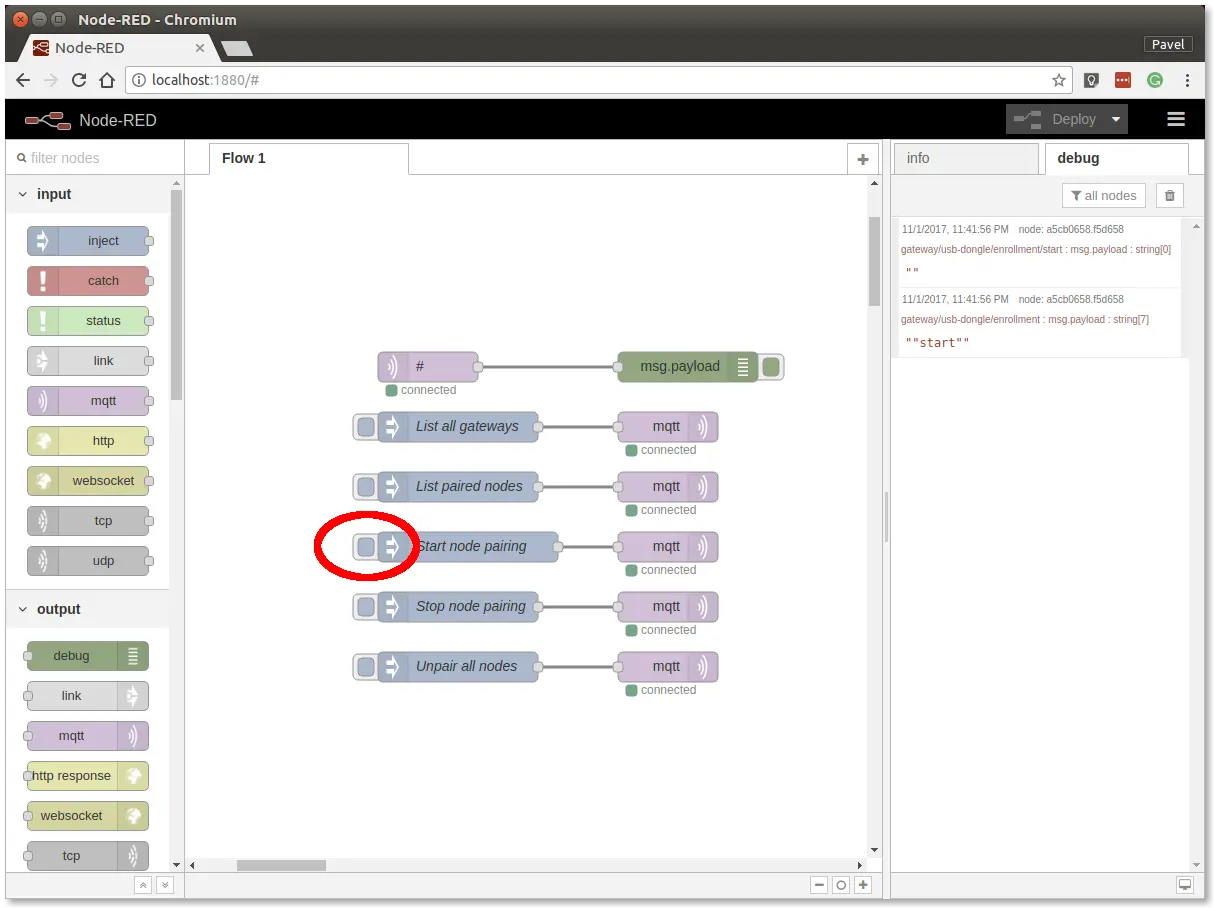
Step 2: Assembly
Insert the batteries into the Radio Climate Monitor to send the pairing request (you should also see the red LED on the Core Module to be on for about 2 seconds).
In the Node-RED debug tab, there is a message about name and firmware version of the new paired module.
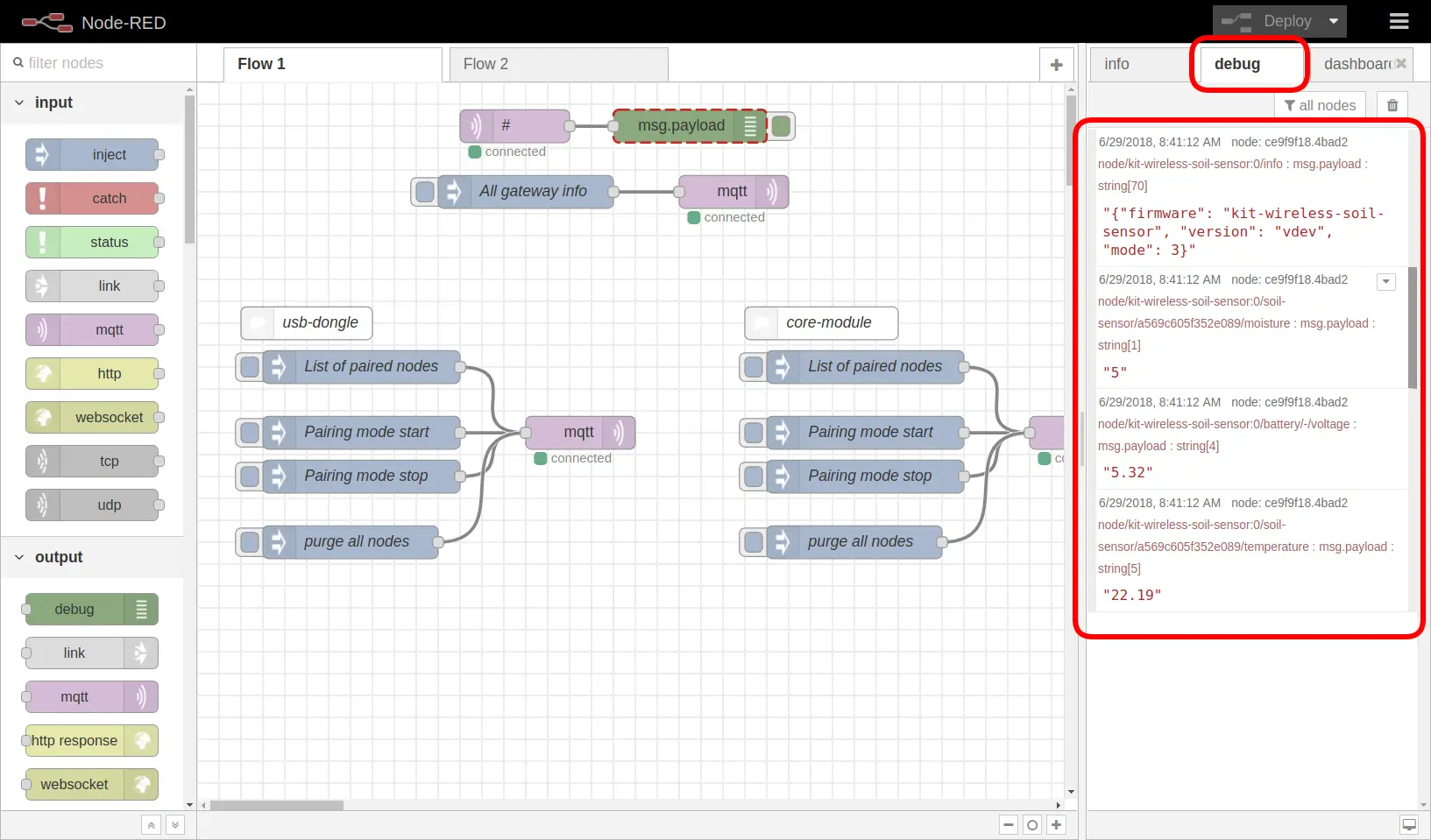
Step 3: Click on the Stop node pairing button
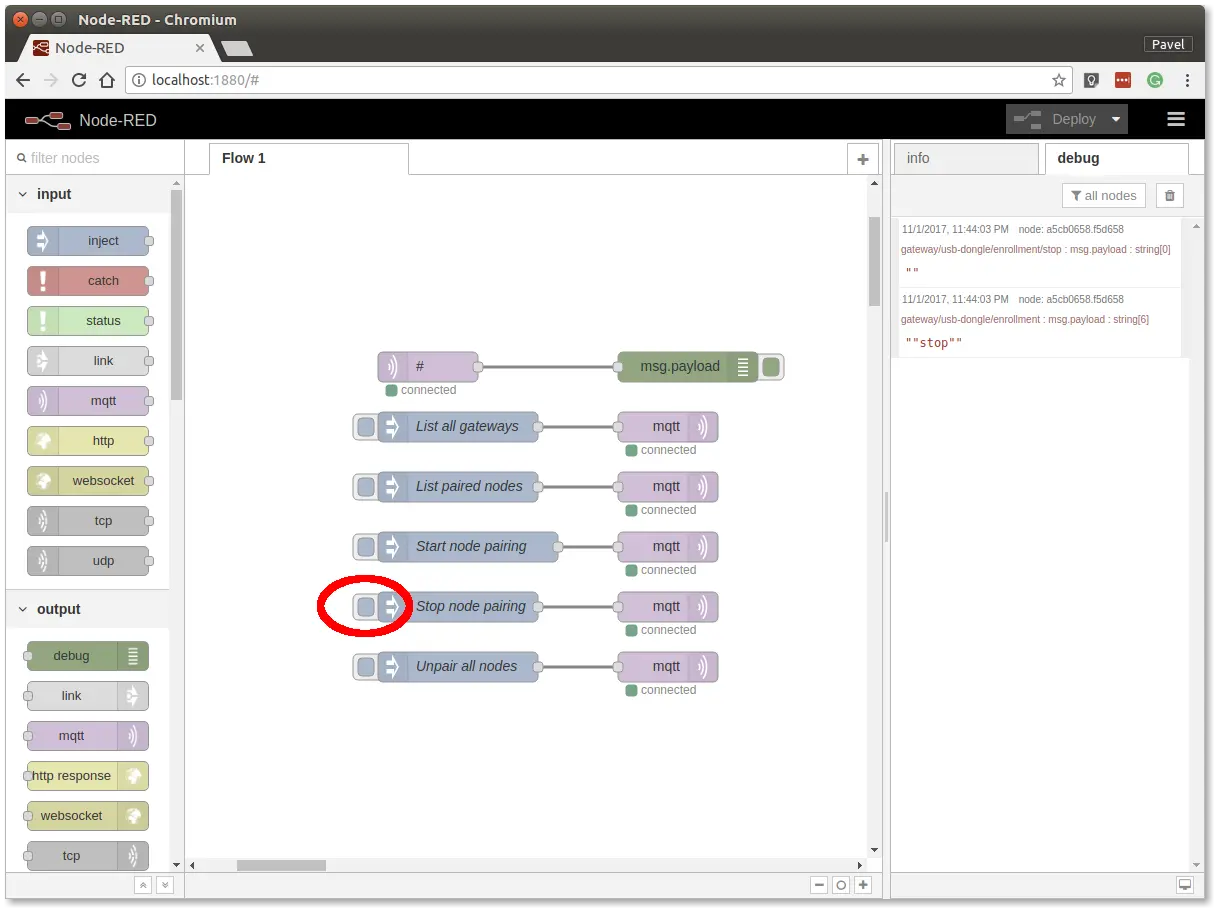
At this point, you've got established a radio link between the node (Radio Moisture Sensor) and the gateway (Radio Dongle).
Communication Test
Follow these steps in Node-RED:
Step 1: Switch to debug tab on the right
Step 2: Test it:
Start breathing on the temperature sensor on the Soil Sensor to invoke a change of temperature and hence trigger a radio transmission.
You should then see similar messages:
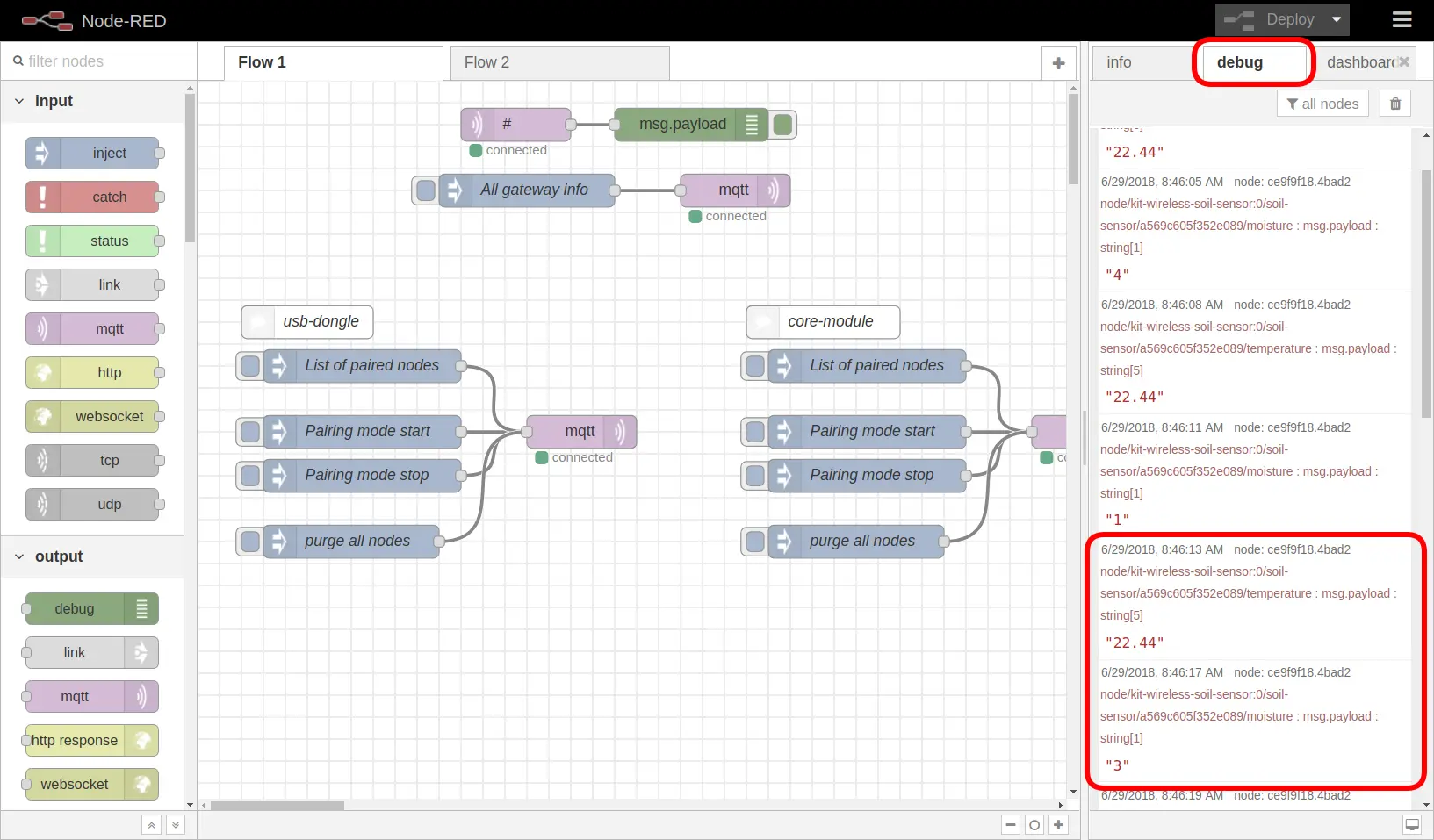
At this point, you've got verified radio communication.
Enclosure
Optionally put the assembly into the appropriate enclosure, if you have one.
You can find more information about the enclosures in the document Enclosures.
Integration Grafana
Now we have assembled our kit and let's start with some basic integration with Grafana.
Step 1: Install dependencies
Install Grafana and InfluxDB database to your Raspberry Pi. This is explained in Grafana for Visualization document
Step 2: Edit config
Add these lines to the /etc/bigclown/mqtt2influxdb.yml configuration file which you had created in the Grafana for Visualization tutorial. This adds support for new topics that Soil Sensor sends.
For text editing, we use nano editor. You can save changes by pressing key combination Ctrl + O and exit editor by pressing Ctrl + X.
Open mqtt2influxdb configuration in nano text editor.
sudo nano /etc/bigclown/mqtt2influxdb.yml
And append these lines at the end of the existing file:
- measurement: moisture
topic: node/+/soil-sensor/+/moisture
fields:
value: $.payload
tags:
id: $.topic[1]
channel: $.topic[3]
- measurement: temperature
topic: node/+/soil-sensor/+/temperature
fields:
value: $.payload
tags:
id: $.topic[1]
channel: $.topic[3]
Step 3: Test that the configuration is valid. Otherwise there is some formatting error in the YAML file
mqtt2influxdb -c /etc/bigclown/mqtt2influxdb.yml --test
Step 4: Restart MQTT2InfluxDB service, because we've changed the configuration
pm2 restart mqtt2influxdb
Step 5: Open Grafana page which is running on Raspberry Pi on port 3000
Step 6: Graph
Now you can see temperature and battery voltage on the bottom. We need to add a moisture graph. Because we added - measurement: moisture to the config file, we need to duplicate existing graph and change its measurement data source to moisture.
Now click on Edit in the duplicated graph.
Now in Metrics tab change the FROM item from value temperature to moisture.
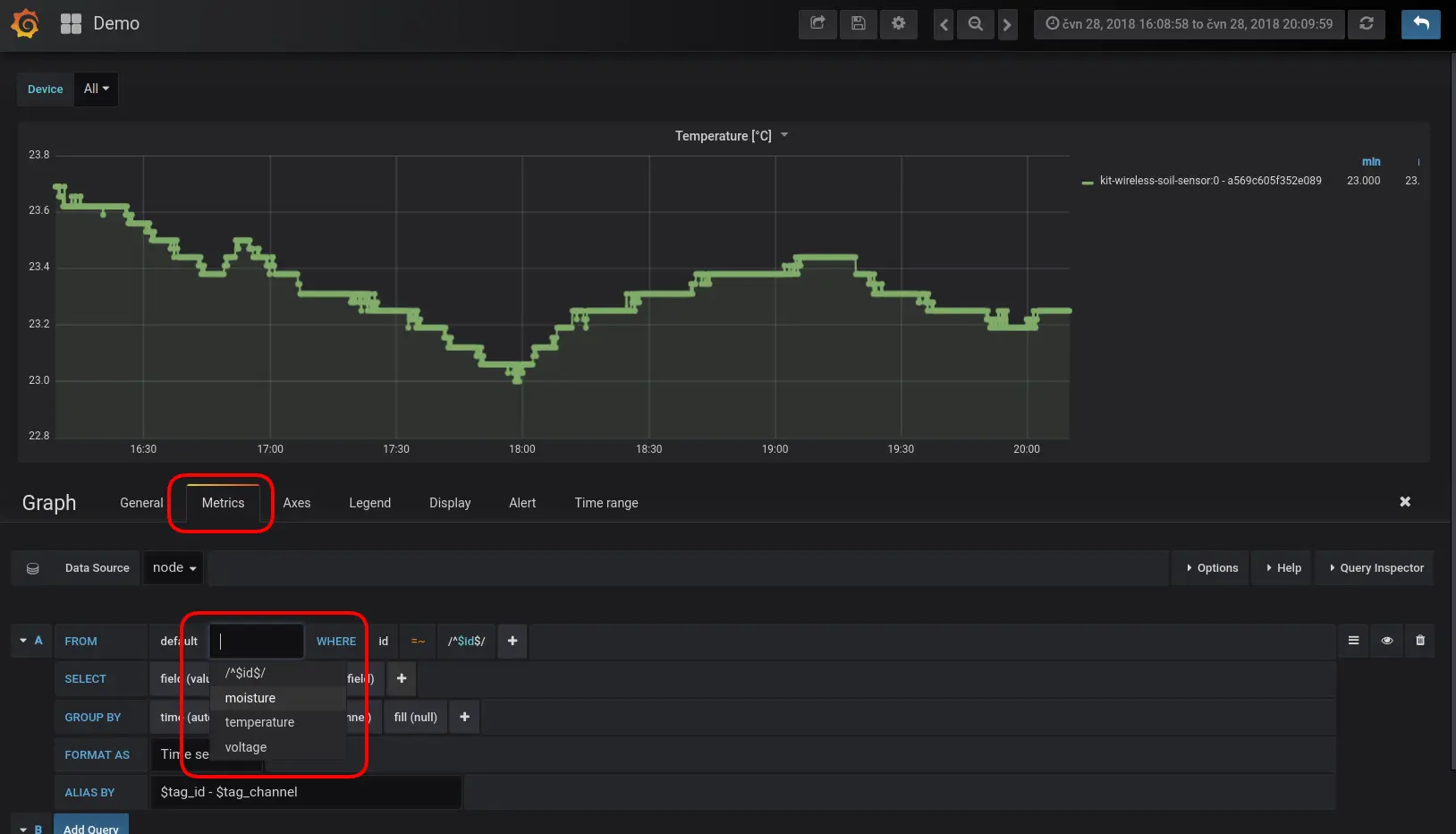
Step 7: Save
Now click on the Save button in the Grafana so all your configuration stays the same next time you open the page.
